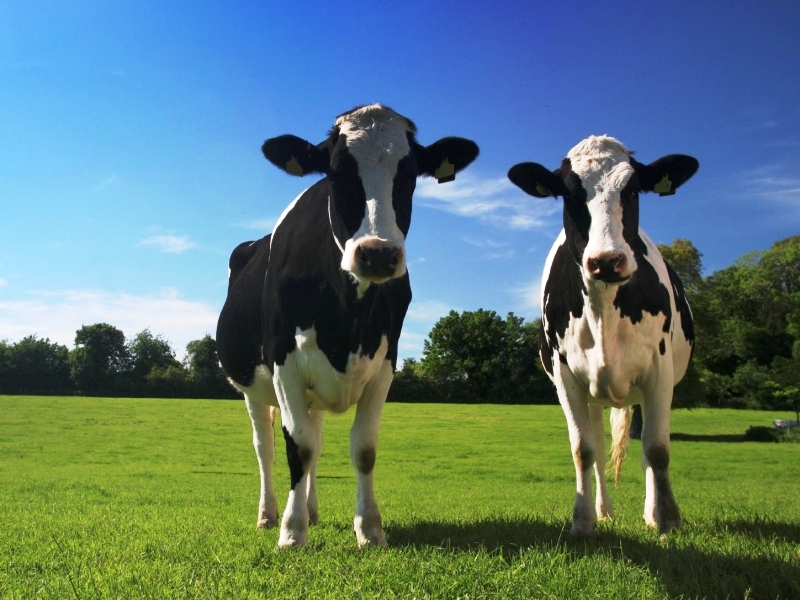LED Lights Lead To Mooo-re Milk For Dairy Farmers!
Posted by Richard Clarke on 17th May 2012
 A recent US study into the feasibility of using low energy LED lights on dairy farms has unexpectedly revealed that they could help dairy farmers increase the milk yield of their cattle by up to 6%.
A recent US study into the feasibility of using low energy LED lights on dairy farms has unexpectedly revealed that they could help dairy farmers increase the milk yield of their cattle by up to 6%.
Surprising Results!
The surprising study, undertaken by the Oklahoma State University (OSU) and partly funded by National Rural Electric Cooperative Association, was originally intended to evaluate the energy-savings offered by LEDs and their overall performance, paying particular attention to the suitability of their design on a working farm.
According to The Kansas Daily Star, the decision to monitor milk-production amongst the livestock arose in response to fears that the LED lights could potentially have harmful side-effects on the animals. In particular, it was felt that they could interfere with their feeding schedule, thereby reducing milk production.
Ironically, the outcome of the study revealed quite the opposite, with the effects of the LED lights actually increasing milk production.
Those cows living in areas of the barn that were newly outfitted with LEDs were found to be producing an extra half gallon of milk per day, whereas those that remained in areas where the lighting wasn’t altered from the traditional fluorescent light sources showed no increase in yield.
Theories Abound!
Several theories have been propounded as to the reason for the LED-illuminated bovines producing more milk, one of which speculates that the more controllable light emitted by the LEDs may help to better regulate the illumination in the feeding and living areas; delineating the two activities.
Thus, a more concentrated light might be encouraging the animals to feed, whilst a mellower, less intense light in the loafing areas enables them to relax more easily.
Despite being a relatively limited study, the outcome has encouraged further investigations into the relationship between LED lights and milk production.
The University of Missouri has already announced that it will begin its own study later this year, hopefully with financial support from the U.S. Department of Agriculture.
The University has also agreed to sponsor a conference to discuss the use of energy-efficient lighting on farms.
Whilst it’s true that LED lighting costs slightly more initially than its fluorescent counterpart, this study alone has shown that mid and longer-term savings on yield can be achieved by its implementation, and that a return on the initial investment can be achieved, often within just 12 months.
LED lights and bulbs have a considerably longer expected lifespan than fluorescent and incandescent bulbs and, at 50,000 hours, the farmers’ lights could conceivably be illuminating their barns in 17 years’ time, long after the fluorescent bulbs have expired.
Add to this the fact that LED bulbs are up to 90% more energy-efficient than their more traditional predecessors, requiring just a tiny fraction of the electricity to produce an equivalent number of lumens of brightness.
A great many studies have shown that human beings’ moods are influenced, both positively and negatively, by light, so it’s entirely possible that other mammals could be similarly affected.
As we’re unable to ask them directly, we’ll just have to take it as read that happier, more contented cows produce more milk, and the reason these cows were happier was improved LED lighting.





